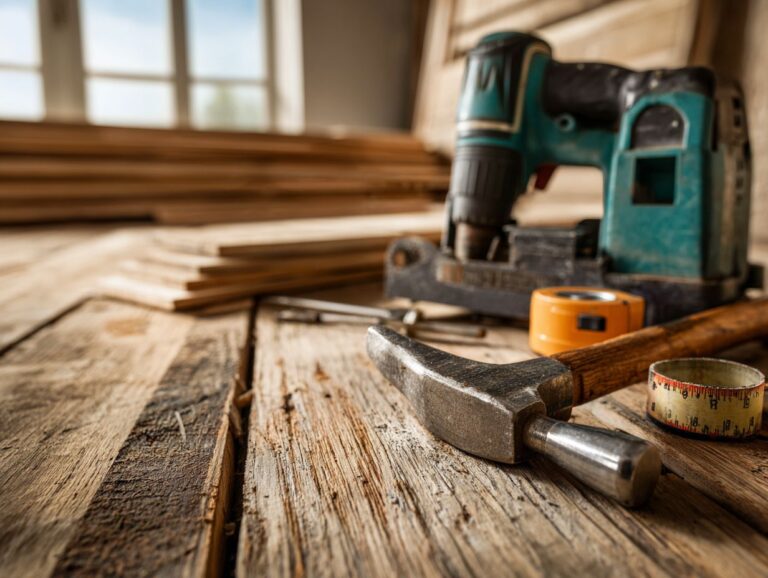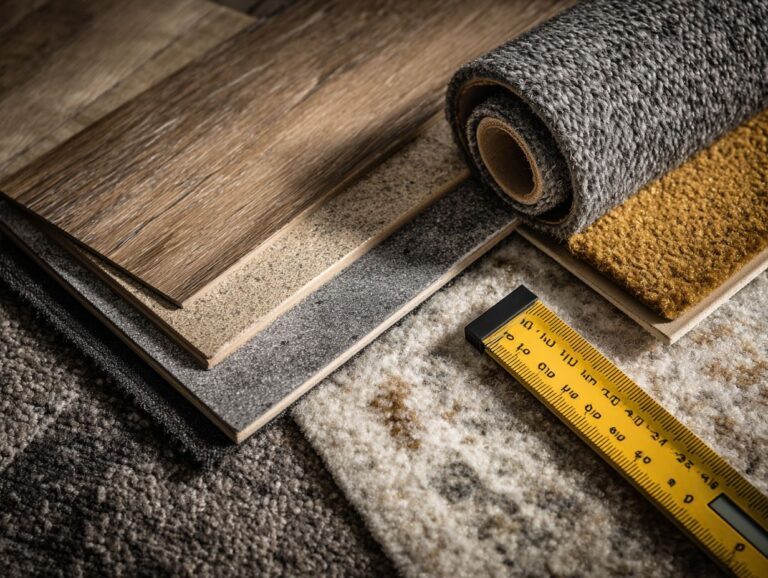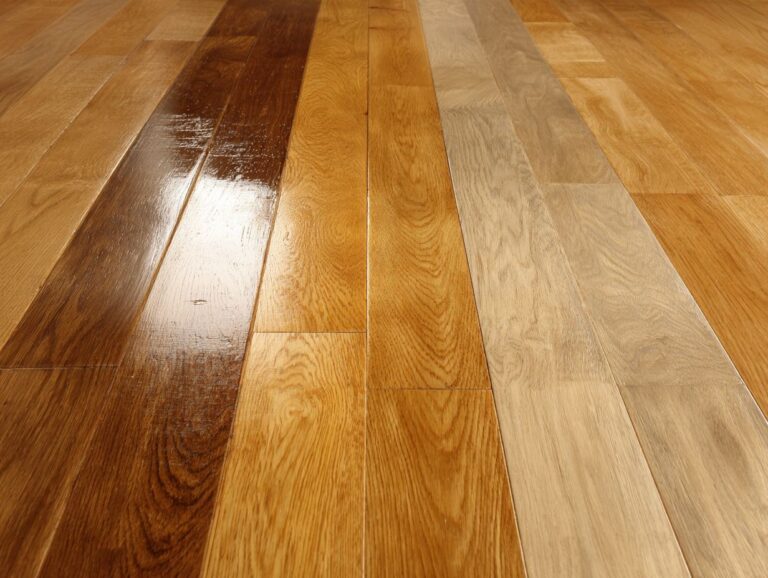Natural Stone Floor Care – Sealing and Cleaning Guide
To keep your stone floors looking great, it’s important to seal and clean them correctly. If you have beautiful marble or similar porous materials, it’s important to use pH neutral cleaning products to prevent damage from strong chemicals, such as ammonia. This guide will walk you through effective techniques to seal natural stone and keep your floors looking pristine, ensuring you enjoy their elegance for years to come.
Key Takeaways:
Contents
- Natural Stone Care and Industry Statistics
- Understanding Stone Characteristics
- Importance of Sealing Natural Stone
- Choosing the Right Sealer
- Preparing the Floor for Sealing
- Application of Sealer
- Cleaning Natural Stone Floors
- Dealing with Stains
- Frequently Asked Questions
- What is natural stone flooring?
- Why is sealing important for natural stone flooring?
- How often should I seal my natural stone flooring?
- Can I clean my natural stone flooring with regular household cleaners?
- How do I prevent scratches on my natural stone flooring?
- Can I use a steam cleaner on my natural stone flooring?
Benefits of Natural Stone Flooring
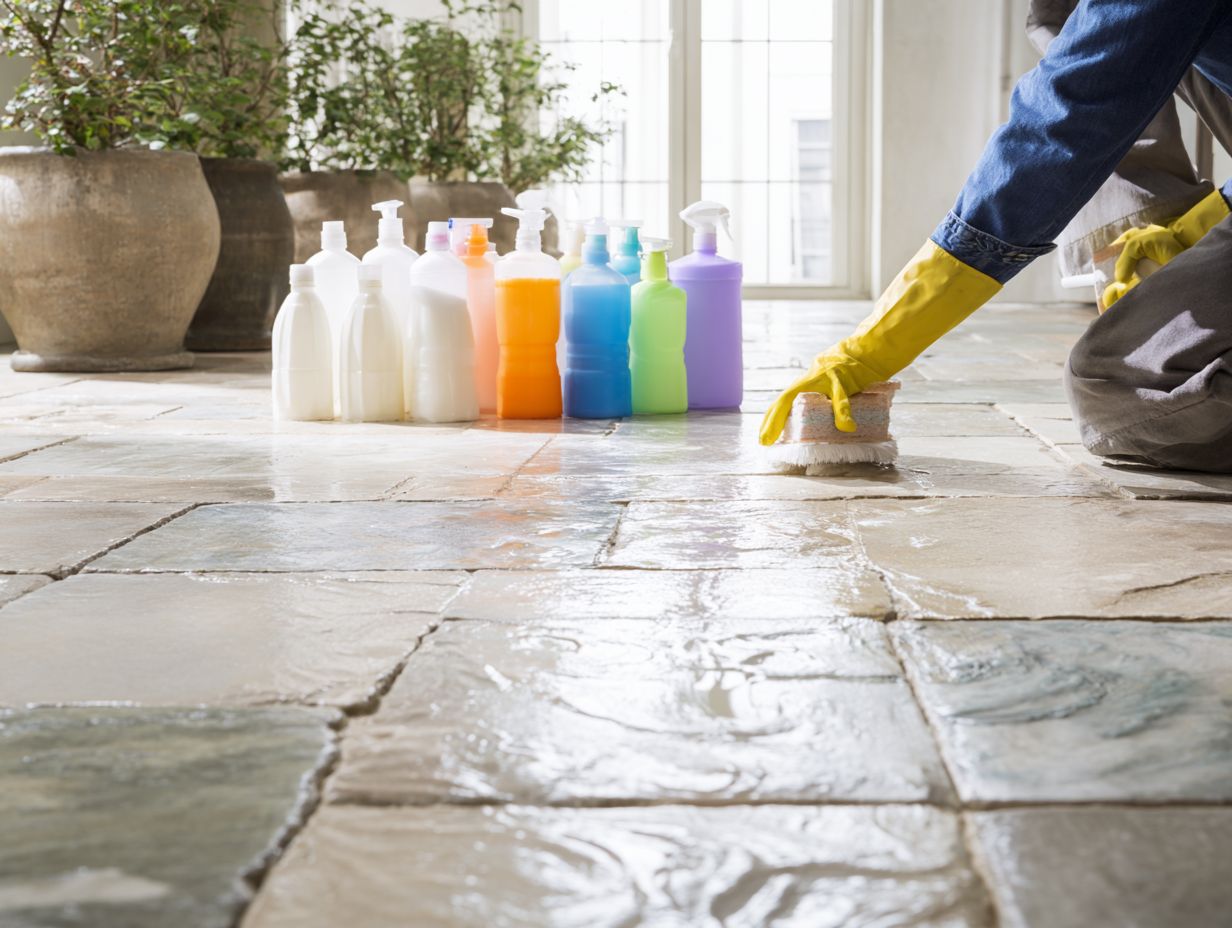
Natural stone flooring, such as marble and granite, provides benefits that include high durability, aesthetic versatility, and low maintenance requirements.
These flooring options are sturdy and will serve your home well for a long time.
Granite kitchens resist heat and give a modern look. In the same way, marble living rooms give a high-end feel with their unique patterns, ensuring no two pieces are alike.
You only need to reseal the stone every few years and clean it with a gentle cleaner.
Selecting natural stone can raise your property’s value, appealing to buyers who appreciate high-quality finishes.
Natural Stone Care and Industry Statistics
Related insight: DIY vs Professional Flooring Installation – Cost Analysis can help you decide the best approach to installing stone flooring in your home.
Natural Stone Care and Industry Statistics
Industry Overview: Stone Industry Firms and Employment
Industry Overview: Financial Data
Industry Trends: Market Expectations and Growth
The Natural Stone Care and Industry Statistics Provide a detailed summary of the stone industry, focusing on important statistics about jobs, financial figures, and new patterns. This data shows how the industry affects the economy and where its growth is heading.
Industry Overview focuses on U.S.-based dimension and crushed stone sectors. The dimension stone segment comprises 9,689 firms employing 85,966 individuals, while the crushed stone sector includes 2,223 firms with 42,059 employees. This employment figure showcases the stone industry’s significant role in job creation and economic contribution, with a combined workforce of over 128,000 people.
Financial Data further emphasizes this impact, with the U.S. dimension stone’s annual payroll reaching approximately $3.15 billion, and crushed stone’s annual payroll at $21.78 billion. The total stone industry consumption in the U.S. is valued at $30 billion, underlining the industry’s substantial economic footprint and influence on related sectors like construction and manufacturing.
Industry Trends indicate positive market expectations, with 82% of companies anticipating sales increases in 2019. This optimism reflects an expanding market and growing demand for natural stone products. Additionally, 28% of companies in 2014 intended to purchase CNC machines The industry is moving towards using automated processes and advanced manufacturing methods to improve efficiency and the quality of products.
The data also reveals a 4.8% increase in natural stone flooring sales in 2017, reflecting consumer preferences for durable and aesthetically pleasing materials. Similarly, a 4% increase in construction spending in 2018 indicates rising investments in building projects that often require natural stone products. Moreover, 80% demand for kitchen islands showcases the trend for functional and stylish home design, further driving the demand for quality stone materials.
Overall, the Natural Stone Care and Industry Statistics show a strong industry with important economic impact and room for growth. As market demand keeps increasing due to construction and consumer choices, the industry is expected to keep growing steadily, with the help of new technologies and planned investments.
Common Types of Natural Stone
Knowing about marble, granite, and limestone is important for choosing the right flooring for your area.
Each stone type has distinct characteristics suited for various installations.
- Marble offers elegance and timeless beauty, priced around $5-$15 per square foot, but is sensitive to acidic substances.
- Granite, costing between $3 and $10 per square foot, is known for being strong and resistant to stains, which makes it perfect for areas with a lot of use.
- Limestone is more porous, costing about $2-$7 per square foot, and is easier to maintain but requires sealing.
- Travertine provides unique textures, typically priced at $4-$10 per square foot.
- Quartzite, a very hard stone, ranges from $5-$15 and is excellent for countertops and floors due to its scratch resistance.
Understanding Stone Characteristics
Natural stones have specific traits that affect their care and maintenance, mainly how porous they are, their density, and how they react to acids.
Porosity and Density
Porosity and density determine how a stone absorbs liquids and reacts to spills, significantly impacting cleaning and maintenance strategies.
High-porosity stones like limestone can absorb spills quickly, requiring immediate cleaning to prevent staining. Granite stones are less absorbent, so cleaning spills is easier.
- For limestone, wipe up spills within 10-15 minutes and use a stone sealer every 6-12 months.
- You only need to clean granite about once a week and seal it every 1 to 3 years.
Knowing these differences helps you care for your stone surfaces the right way, making them last longer.
Acid Sensitivity

Knowing a stone’s acid sensitivity is essential, as many common cleaning products can damage sensitive surfaces like marble and limestone.
To preserve these materials, avoid acidic cleaners such as vinegar or lemon juice. Instead, opt for pH-neutral products.
Recommended alternatives include:
- Stone soap, which is specifically designed for delicate surfaces
- Eco-friendly cleaners that are safe for stone
When cleaning, always use a soft cloth to prevent scratching and avoid abrasive tools. Regularly sealing your stone surfaces can help protect against stains and etching.
This simple routine will extend the life of your beautiful stone features.
Importance of Sealing Natural Stone
Applying a protective coating on natural stone is important to prevent stains and maintain the surfaces, so they look good over time.
Protection Against Stains
Sealing natural stone creates a protective barrier that prevents liquid penetration, effectively managing spills and enhancing stain resistance.
Sealers repel liquids like water, oil, and wine, reducing the likelihood of staining by up to 90%. To maintain countertops or floors, apply a sealant every six months to one year, depending on the type of stone.
For example, granite often requires sealing annually, while porous stones like limestone may need more frequent applications. Tools like stone enhancers can make the color deeper and provide protection, while penetrating sealers maintain the original appearance.
Always test a small spot first to make sure it works well.
Enhancing Durability
Regular sealing makes natural stone floors last longer, stopping damage that can result in expensive repairs or restoration.
To extend the life of your stone floors, apply a sealant every 1-2 years in residential properties and every 6-12 months in high-traffic commercial spaces.
Start by cleaning the floors thoroughly, then apply a high-quality sealant like Dupont StoneTech or Aqua Mix, using a roller for even coverage.
After sealing, consider methods to maintain the floor’s shine, such as polishing it every few years. A proactive maintenance routine can reduce wear by up to 50%, helping preserve both appearance and value.
Choosing the Right Sealer
Choosing the correct sealer is important to guard your natural stone floors and make them last longer.
Types of Sealers
There are two main types of sealers for natural stone: penetrating sealers that absorb into the stone and topical sealers that sit on the surface.
Pene In contrast, topical sealers like Aqua Mix High Gloss Sealer ($70) create a glossy surface layer, enhancing appearance but may need reapplication more frequently. Choose a penetrating sealer for outdoor applications or high-traffic areas, while topical sealers work well for enhancing aesthetics in low-traffic spaces. Knowing these differences helps you pick a stone that fits its purpose and the environment. When choosing a sealer, consider the type of stone, where it will be used, and the finish you want. For instance, if working with porous stones like limestone, opt for a penetrating sealer that allows breathability while preventing stains. In contrast, a high-traffic area with dense granite may benefit from a topical sealer, which offers a glossy finish and durable protection. Think about the setting: outdoor uses need UV-resistant sealers to handle weather, while indoor areas might need less strong options. Test a small spot first to check it works well and looks how you want. Getting your stone floor ready is essential for a good seal. This process includes cleaning it well and fixing any damage. A clean surface is essential before sealing; it should be free of dirt, soap scum, and residues that could interfere with the sealer’s effectiveness. Begin your cleaning process by dust mopping the area to remove loose debris, which typically takes about 15 minutes. Next, use a pH-neutral stone cleaner like Stone Soap, applying it with a soft cloth, which should take approximately 30 minutes for thorough coverage. After cleaning, rinse the surface thoroughly with clean water to prevent any soap residue from lingering, adding another 15 minutes to your total. Avoid common mistakes such as using abrasive materials or harsh chemicals, as these can damage the surface. Expect the entire cleaning to take about 1-2 hours. Before sealing, fix any damages like chips or cracks to stop them from getting worse and to make the surface smooth. Begin by inspecting the surface for damages. For minor chips, use a two-part epoxy filler designed for marble, like StoneCare’s Marble Repair Kit, which usually takes about 2-3 hours to set. After the filler hardens, sand the area with fine-grit sandpaper to create a level surface. Finish by polishing with a marble polishing compound to restore the shine. This method fixes visible flaws and increases the lifespan of your marble investment. To seal your stone floor, you need specific tools and a simple method to apply the seal evenly and provide effective protection. Essential tools for sealing natural stone include a paint roller or applicator brush, microfiber cloths, and a bucket for mixing the sealer. To use correctly, a brush works best and is priced at around $10. A paint roller, preferable for larger areas, is typically priced at $15. Microfiber cloths, useful for buffing and cleaning up spills, can be purchased in sets for about $10. A sturdy bucket for mixing the sealer is essential and usually costs around $5. Together, these tools enable a professional finish while protecting your surface, ensuring you maintain the stone’s natural beauty and durability. Completing a planned sealing method provides excellent protection; the steps are simple and often take just a few hours. Cleaning natural stone floors regularly is important to keep them looking good and to stop dirt and spills from damaging them. Regular care for natural stone floors can be easily handled by following a few basic steps that keep them clean and make them last longer. To maintain your floors effectively, follow these daily tips: By incorporating these steps into your daily routine, you’ll preserve the beauty and durability of your stone floors. You should thoroughly clean every few months to remove accumulated dirt and restore the stone’s natural appearance, using specific techniques and products. To effectively deep clean your stone surfaces, start with a heavy-duty cleaner like Rock Doctor, which breaks down tough stains and grime. After applying the cleaner, use a soft brush to scrub the surface gently, ensuring you reach all crevices. Rinse thoroughly with clean water to remove any residue. Try to do this thorough cleaning every 3-6 months, and allow 1-2 hours for the best results. Regular upkeep increases how long your stone lasts and keeps it looking good. Stains can be a problem for natural stone floors. Identifying and cleaning them correctly is important to maintain the appearance of these floors. Correctly identifying stains is important because each type needs its own cleaning method to prevent harming the stone. Common stains include those from coffee and red wine. These stains usually look dark and are often found near places where food or drinks are served. Inorganic stains, like rust, typically present as reddish-brown marks and are frequently found near fixtures or water leaks. Oil-based stains, such as grease, appear dark and slick, often around kitchen areas. To effectively tackle these stains, start by blotting up any excess, then apply a suitable cleaner based on the stain type: You can remove stains from your natural stone floors with everyday items like baking soda and hydrogen peroxide. This method can make your floors look great again without causing harm. To tackle specific stain types, try these methods: Try out the product on a small, hidden spot first to make sure it’s safe, and don’t forget to keep your area well-ventilated while you work with these materials.Factors to Consider When Selecting a Sealer
Preparing the Floor for Sealing
Cleaning the Surface
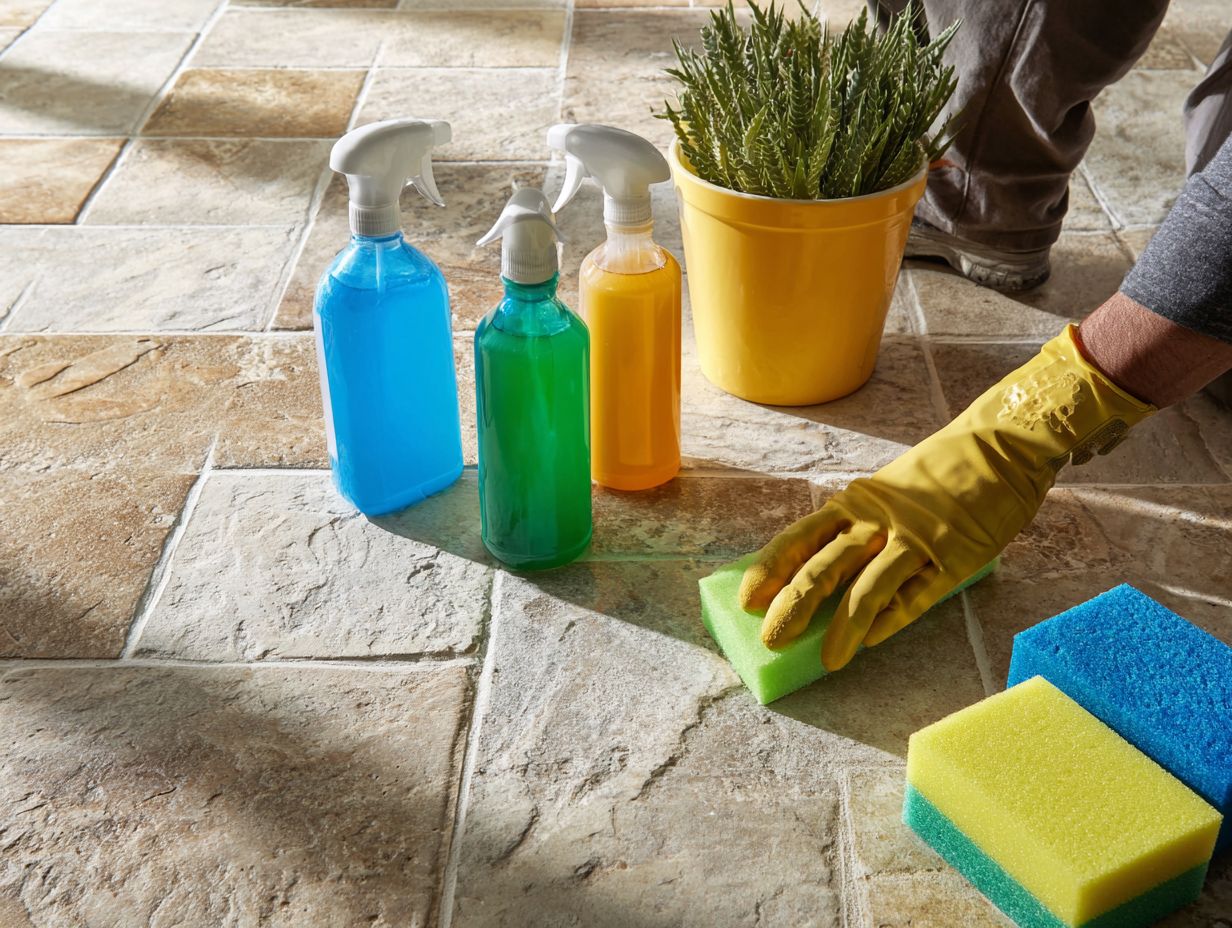
Repairing Damages
Application of Sealer
Tools Needed for Application
Step-by-Step Sealing Process
Cleaning Natural Stone Floors
Daily Maintenance Tips
Deep Cleaning Methods
Dealing with Stains
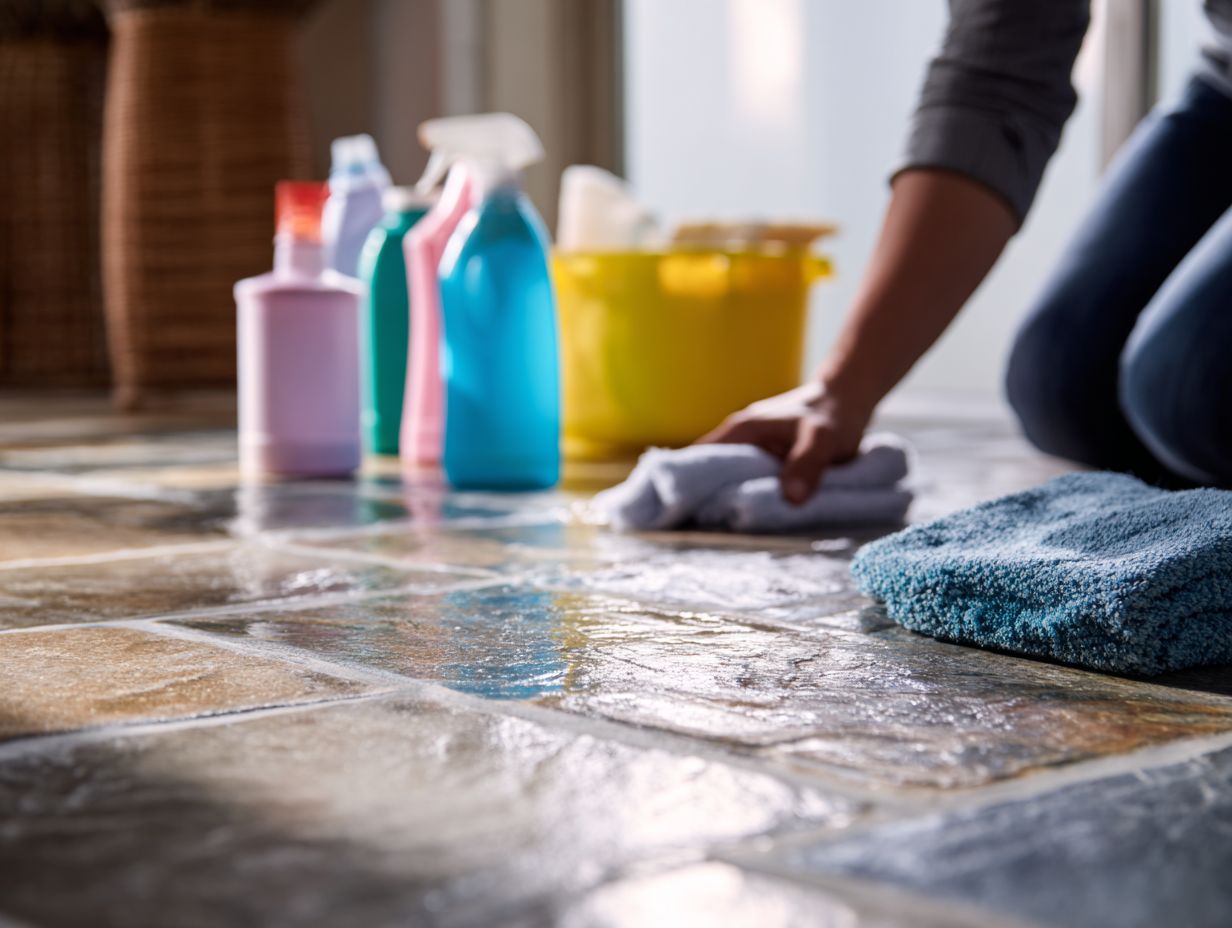
Identifying Different Types of Stains
Effective Stain Removal Techniques
Frequently Asked Questions
What is natural stone flooring?
Natural stone flooring is a type of flooring made from natural materials, such as marble, granite, limestone, or travertine. These materials are sliced into tiles and serve as a strong and attractive flooring choice.
Why is sealing important for natural stone flooring?
Sealing is important for natural stone flooring because it helps to protect the stone from stains, scratches, and other types of damage. It also helps to maintain the natural beauty and shine of the stone.
How often should I seal my natural stone flooring?
The frequency of sealing your natural stone flooring will depend on the type of stone and the amount of foot traffic it receives. Generally, you should seal your flooring every 1-2 years.
Can I clean my natural stone flooring with regular household cleaners?
No, it is not recommended to clean natural stone flooring with regular household cleaners as they may contain harsh chemicals that can damage the stone. It is best to use a pH-neutral cleaner specifically designed for natural stone floors.
How do I prevent scratches on my natural stone flooring?
To prevent scratches on your natural stone flooring, it is important to regularly sweep or vacuum to remove any debris or dirt that can cause scratches. It is also recommended to place rugs or mats in high traffic areas to protect the stone.
Can I use a steam cleaner on my natural stone flooring?
No, it is not recommended to use a steam cleaner on natural stone flooring as the high heat and moisture can damage the stone. It is best to use a gentle cleaning method, such as mopping with a pH-neutral cleaner, to avoid any potential damage.

